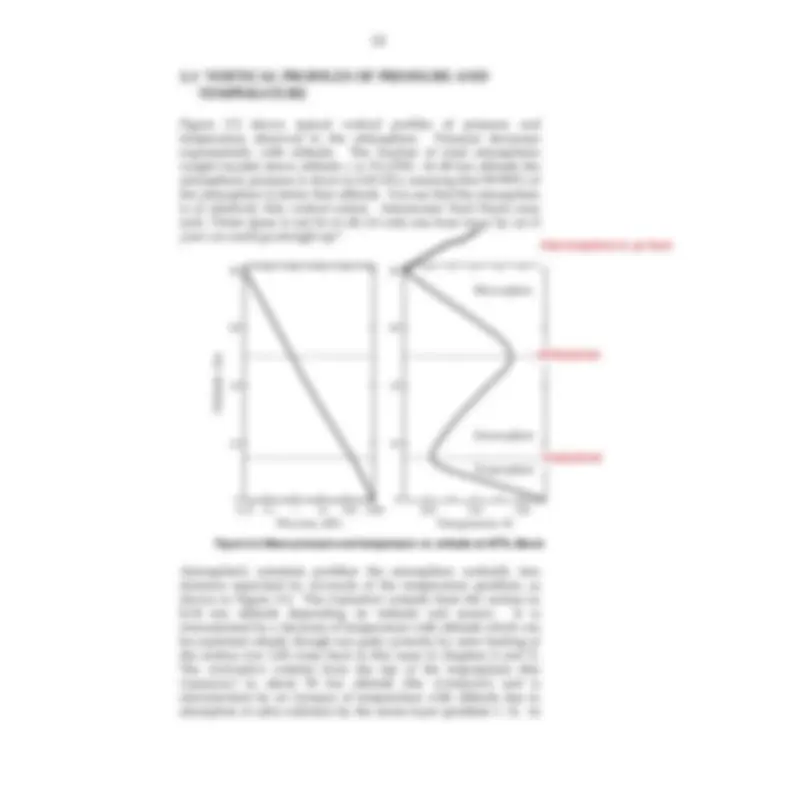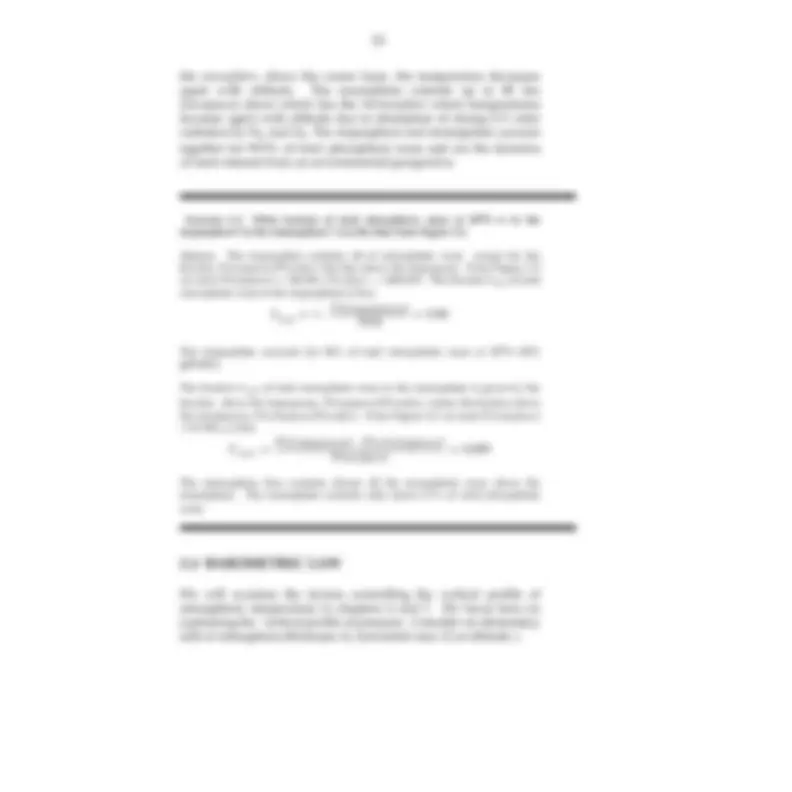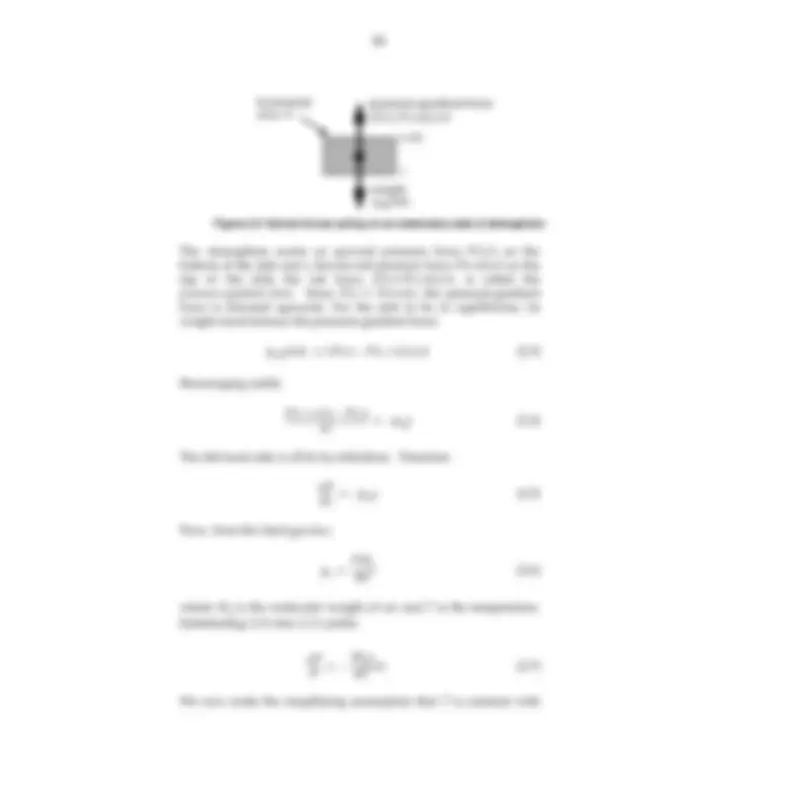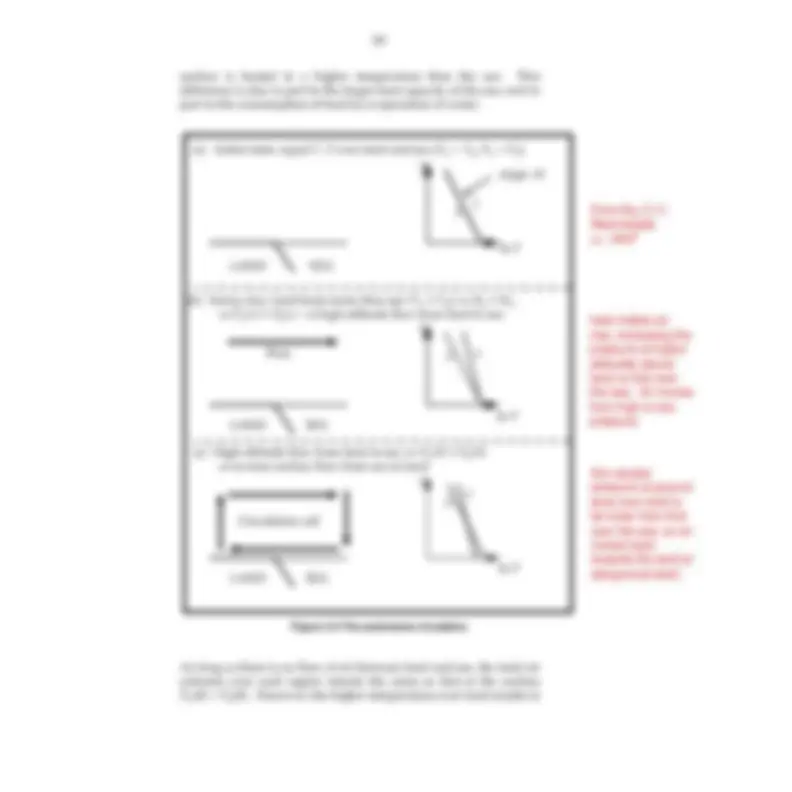







Study with the several resources on Docsity

Earn points by helping other students or get them with a premium plan


Prepare for your exams
Study with the several resources on Docsity

Earn points to download
Earn points by helping other students or get them with a premium plan
Community
Ask the community for help and clear up your study doubts
Discover the best universities in your country according to Docsity users
Free resources
Download our free guides on studying techniques, anxiety management strategies, and thesis advice from Docsity tutors
MEASURING ATMOSPHERIC PRESSURE
Typology: Lecture notes
1 / 9

This page cannot be seen from the preview
Don't miss anything!






The atmospheric pressure is the weight exerted by the overhead atmosphere on a unit area of surface. It can be measured with a mercury barometer, consisting of a long glass tube full of mercury inverted over a pool of mercury:
Figure 2-1 Mercury barometer
When the tube is inverted over the pool, mercury flows out of the tube, creating a vacuum in the head space, and stabilizes at an equilibrium height h over the surface of the pool. This equilibrium requires that the pressure exerted on the mercury at two points on the horizontal surface of the pool, A (inside the tube) and B (outside the tube), be equal. The pressure PA at point A is that of the
mercury column overhead, while the pressure P (^) B at point B is that
of the atmosphere overhead. We obtain PA from measurement of h :
where ρ Hg = 13.6 g cm-3^ is the density of mercury and g = 9.8 m s -
is the acceleration of gravity. The mean value of h measured at sea level is 76.0 cm, and the corresponding atmospheric pressure is
1.013x10^5 kg m -1^ s-2^ in SI units. The SI pressure unit is called the
Pascal (Pa); 1 Pa = 1 kg m-1^ s-2^. Customary pressure units are the
atmosphere (atm) (1 atm = 1.013x10^5 Pa), the bar (b) (1 b = 1x10 5 Pa), the millibar (mb) (1 mb = 100 Pa), and the torr (1 torr = 1 mm Hg = 134 Pa). The use of millibars is slowly giving way to the equivalent SI unit of hectoPascals (hPa). The mean atmospheric pressure at
sea level is given equivalently as P = 1.013x10^5 Pa = 1013 hPa = 1013 mb = 1 atm = 760 torr.
h
vacuum
P (^) A = ρ Hg gh
The global mean pressure at the surface of the Earth is P (^) S = 984
hPa, slightly less than the mean sea-level pressure because of the elevation of land. We deduce the total mass of the atmosphere m (^) a :
where R = 6400 km is the radius of the Earth. The total number of
moles of air in the atmosphere is Na = ma/Ma = 1.8x10^20 moles.
Exercise 2-1. Atmospheric CO 2 concentrations have increased from 280 ppmv in preindustrial times to 365 ppmv today. What is the corresponding increase in the mass of atmospheric carbon? Assume CO 2 to be well mixed in the atmosphere.
Answer. We need to relate the mixing ratio of CO 2 to the corresponding mass of carbon in the atmosphere. We use the definition of the mixing ratio from equation (1.3) ,
where NC and Na are the total number of moles of carbon (as CO 2 ) and air in the atmosphere, and mC and m (^) a are the corresponding total atmospheric masses. The second equality reflects the assumption that the CO 2 mixing ratio is uniform throughout the atmosphere, and the third equality reflects the relationship N = m/M. The change ∆ mC in the mass of carbon in the atmosphere since preindustrial times can then be related to the change ∆ CCO2 in the mixing ratio of CO 2. Again, always use SI units when doing numerical calculations (this is your last reminder!):
m (^) a
4 π R 2 PS g
= -------------------- = 5.2 x 10 18 kg
n (^) CO 2 n (^) a
N (^) a
M (^) a M (^) C
m (^) C m (^) a
∆ m (^) C m (^) a
M (^) a
--------- (^) ⋅ ∆ C (^) CO 2 5.2x10 18 12x^
29x
-------------------– 3 - (^) 365x
=1.8x10 14 kg = 180 billion tons!
the mesosphere, above the ozone layer, the temperature decreases again with altitude. The mesosphere extends up to 80 km ( mesopause ) above which lies the thermosphere where temperatures increase again with altitude due to absorption of strong UV solar radiation by N 2 and O 2. The troposphere and stratosphere account
together for 99.9% of total atmospheric mass and are the domains of main interest from an environmental perspective.
Exercise 2-2 What fraction of total atmospheric mass at 30 o^ N is in the troposphere? in the stratosphere? Use the data from Figure 2-2.
Answer. The troposphere contains all of atmospheric mass except for the fraction P(tropopause)/P(surface) that lies above the tropopause. From Figure 2- we read P(tropopause) = 100 hPa, P(surface) = 1000 hPa. The fraction Ftrop of total atmospheric mass in the troposphere is thus
The troposphere accounts for 90% of total atmospheric mass at 30 o^ N (85% globally).
The fraction Fstrat of total atmospheric mass in the stratosphere is given by the fraction above the tropopause, P(tropopause)/P(surface) , minus the fraction above the stratopause, P(stratopause)/P(surface). From Figure 2-2 we read P(stratopause) = 0.9 hPa, so that
The stratosphere thus contains almost all the atmospheric mass above the troposphere. The mesosphere contains only about 0.1% of total atmospheric mass.
We will examine the factors controlling the vertical profile of atmospheric temperature in chapters 4 and 7. We focus here on explaining the vertical profile of pressure. Consider an elementary slab of atmosphere (thickness dz , horizontal area A ) at altitude z :
F (^) trop 1 P tropopause (^ ) P ( 0 )
F (^) strat P tropopause ( ) – P stratopause ( ) P surface ( )
Figure 2-3 Vertical forces acting on an elementary slab of atmosphere
The atmosphere exerts an upward pressure force P(z)A on the bottom of the slab and a downward pressure force P(z+dz)A on the top of the slab; the net force, ( P(z)-P(z+dz))A, is called the pressure-gradient force. Since P(z) > P(z+dz) , the pressure-gradient force is directed upwards. For the slab to be in equilibrium, its weight must balance the pressure-gradient force:
Rearranging yields
The left hand side is dP/dz by definition. Therefore
Now, from the ideal gas law,
where M (^) a is the molecular weight of air and T is the temperature.
Substituting (2.6) into (2.5) yields:
We now make the simplifying assumption that T is constant with
( P(z)-P(z+dz))A z+dz
z weight
horizontal area A
pressure-gradient force
ρa gAdz
ρ a gAdz =( P z ( ) – P z ( + dz )) A
P z ( + dz ) – P z ( ) dz
----------------------------------------- = –ρ a g
dP dz
------- =–ρ a g
ρ a
PM (^) a RT
dP P
M (^) a g RT
= –^ ----------- dz
behaves as a homogeneous gas of molecular weight Ma = 29 g
mol-1^. Dalton’s law stipulates that each component of the air mixture must behave as if it were alone in the atmosphere. One might then expect different components to have different scale heights determined by their molecular weight. In particular, considering the difference in molecular weight between N 2 and O 2 ,
one might expect the O 2 mixing ratio to decrease with altitude.
However, gravitational separation of the air mixture takes place by molecular diffusion, which is considerably slower than turbulent vertical mixing of air for altitudes below 100 km (problem 4. 9). Turbulent mixing thus maintains a homogeneous lower atmosphere. Only above 100 km does significant gravitational separation of gases begin to take place, with lighter gases being enriched at higher altitudes. During the debate over the harmful effects of chlorofluorocarbons (CFCs) on stratospheric ozone, some not-so-reputable scientists claimed that CFCs could not possibly reach the stratosphere because of their high molecular weights and hence low scale heights. In reality, turbulent mixing of air ensures that CFC mixing ratios in air entering the stratosphere are essentially the same as those in surface air.
Exercise 2-3 The cruising altitudes of subsonic and supersonic aircraft are 12 km and 20 km respectively. What is the relative difference in air density between these two altitudes?
Answer. Apply (2.12) with z 1 = 12 km, z2 = 20 km, H = 7.4 km:
The air density at 20 km is only a third of that at 12 km. The high speed of supersonic aircraft is made possible by the reduced air resistance at 20 km.
An illustration of the Barometric Law is the sea-breeze circulation commonly observed at the beach on summer days (Figure 2-4). Consider a coastline with initially the same atmospheric temperatures and pressures over land (L) and over sea (S). Assume that there is initially no wind. In summer during the day the land
ρ ( z 2 ) ρ ( z 1 )
e
z 2
e
z 1
-------- e
( z 2 – z 1 )
surface is heated to a higher temperature than the sea. This difference is due in part to the larger heat capacity of the sea, and in part to the consumption of heat by evaporation of water.
Figure 2-4 The sea-breeze circulation
As long as there is no flow of air between land and sea, the total air columns over each region remain the same so that at the surface PL (0) = PS (0). However, the higher temperature over land results in
(a) Initial state: equal T, P over land and sea ( T (^) L = T (^) S , PL = P (^) S )
ln P
z
(b) Sunny day: land heats more than sea (T (^) L > TS ) ⇒ HL > H (^) S
slope - H
(c) High-altitude flow from land to sea ⇒ PL(0) < P (^) S (0)
⇒ P (^) L(z) > PS(z) ⇒ high-altitude flow from land to sea
⇒ reverse surface flow from sea to land
ln P
ln P
z
z
Flow
Circulation cell